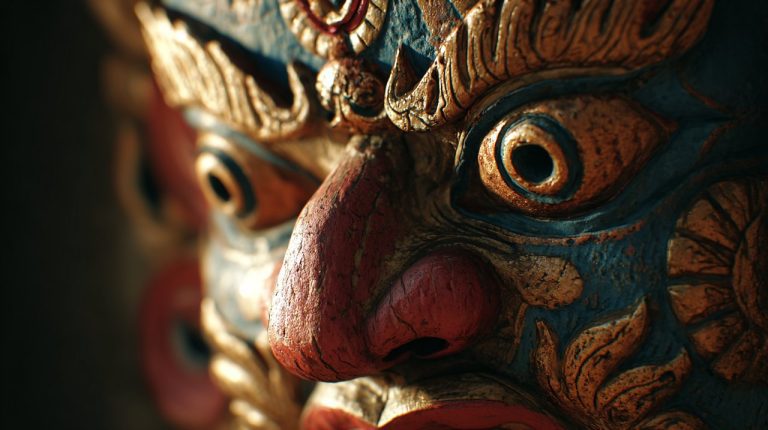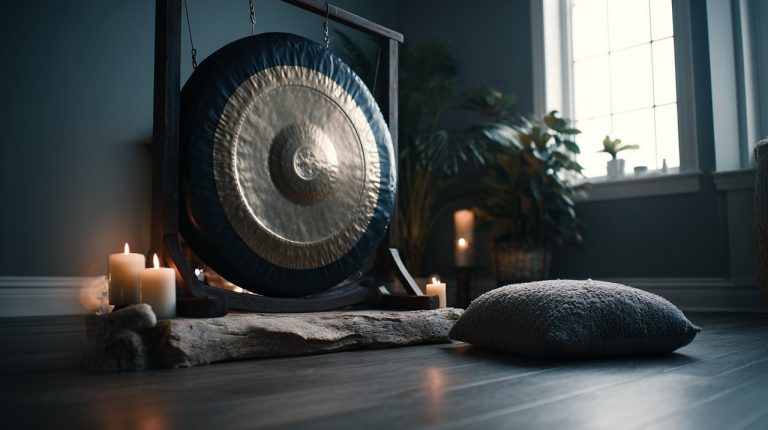Properties of Volcanic Rock: A Complete Guide to Lava Stone’s Healing, Uses, & Value
Imagine a stone born from the Earth’s raw, fiery core—a testament to immense geological power. Volcanic rock, often overshadowed by more glittering gemstones, holds a different kind of allure. It doesn’t dazzle with light, but offers a tangible sense of stability and connection.
For me, Alex Chen, the fascination lies in understanding why this humble stone, a direct product of such powerful forces, resonates so deeply. It’s about exploring how its very formation provides physical and psychological anchors in our lives, moving beyond simple observation to a rational understanding of its unique place in personal practices.
Earth’s Fiery Core: Understanding Volcanic Rock’s Physical Essence
A Genesis of Rapid Cooling
The formation process often occurs rapidly, trapping gases and creating the stone’s distinctive porous texture. This journey from liquid fire to solid form showcases the planet’s dynamic energy and swift geological shifts.
Typically, volcanic rock appears dark, often black or deep gray, with an irregular, rough surface. Its appearance directly reflects its fiery origin, offering a visual contrast to the crystalline structures of other minerals. For instance, comparing it to a polished piece of obsidian, another volcanic rock, highlights lava stone’s unique texture.
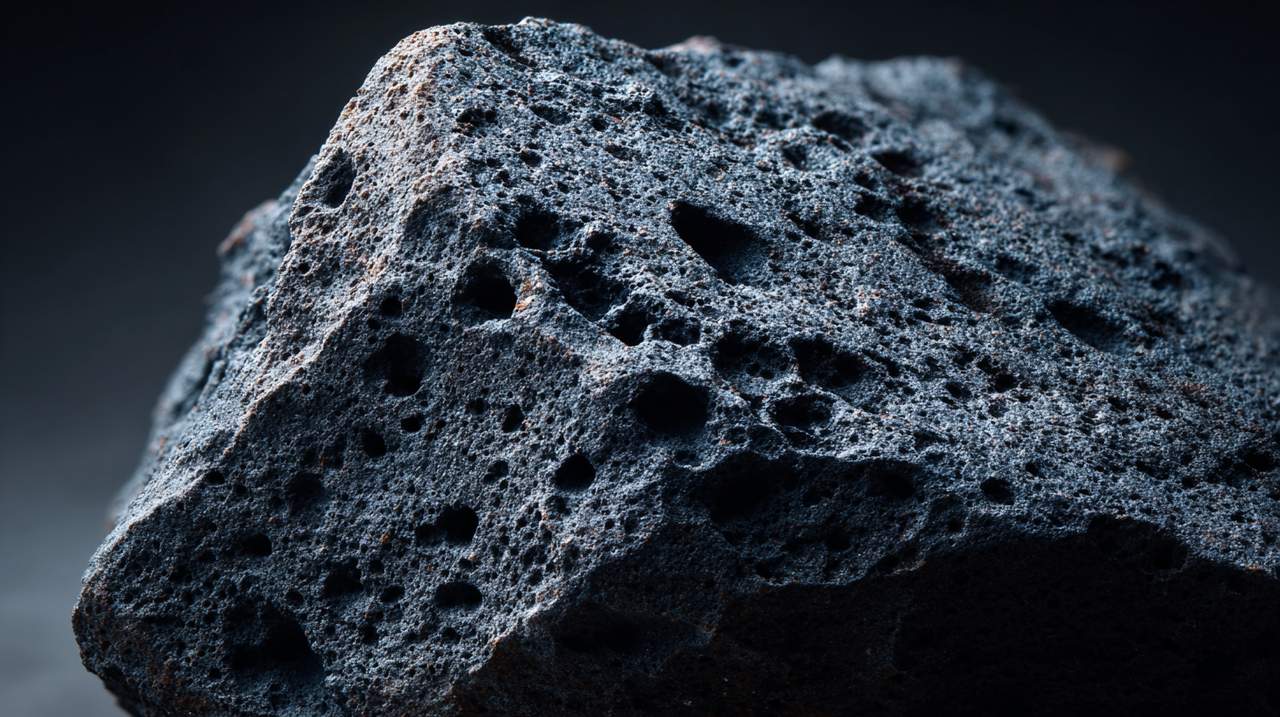
Anatomy of an Earth-Born Stone
Among the most striking properties of volcanic rock is its high porosity. This isn’t just a visual characteristic; it’s a functional trait, making the stone surprisingly lightweight yet robust.
Its density, though variable, contributes to a tangible, solid feel, even with numerous small air pockets. These interconnected pores are, in fact, crucial for understanding many of its practical applications, particularly its role in aromatherapy, which we’ll explore shortly.
More Than Just a Rock: Key Features
Beyond its porosity, lava stone offers a unique tactile quality, often described as earthy or rugged. This texture provides a distinct sensory experience, inviting touch and connection, acting as a subtle anchor for our attention.
While predominantly dark, some colored lava rocks do exist. Their hues are influenced by specific mineral compositions and cooling conditions. Regardless of its color, the fundamental structure and volcanic origin define the essence of lava rock.
Beyond the Surface: Lava Stone’s Grounding and Healing Resonance
The idea that lava stone possesses “grounding” or “healing” properties often sparks curiosity. For me, Alex Chen, it’s about dissecting these perceptions. A closer look reveals observable mechanisms at play, not magic, but a fascinating interplay of its physical attributes and our psychological responses. It’s about understanding the ‘why’ behind the ‘what’.
The Grounding Principle: Physicality Meets Psychology
When we explore lava stone’s grounding effect, we find a tangible connection. The stone’s weight and rough texture provide a physical anchor. This isn’t just a feeling; it’s a form of tactile stimulation that engages our somatosensory system, drawing our focus away from mental chatter and towards the present moment.
Think of it as a subtle, persistent hand on your shoulder, gently reminding you of your physical presence. This kind of sensory feedback can be incredibly helpful, acting as a powerful psychological tool to shift attention from abstract worries to immediate reality. It’s similar to how some find comfort in holding a worry stone, or how Root chakra stones are believed to foster a sense of stability.
The raw, unprocessed nature of lava stone fosters a primal connection to Earth, subtly influencing our perception of stability. It’s like holding a piece of ancient, unshakeable wisdom – a solid touch that soothes the mind.
Emotional Stability and Sensory Engagement
Holding a lava stone can be a simple, effective way to engage the senses and quiet an overactive mind. Its understated aesthetic avoids visual overstimulation, offering a calm focal point, a subtle anchor in a chaotic world.
The stone’s solid, unyielding presence offers a powerful contrast to fleeting thoughts, providing a quiet point of focus. This subtle sensory input can significantly contribute to feelings of calm and composure, acting as a consistent, reassuring presence.
I remember a friend who, during a particularly stressful meeting, would subtly trace the rough surface of a small lava stone in her pocket. She explained it helped her maintain focus, anchoring her attention in the present when her thoughts threatened to spiral. It’s a clear example of how small, tactile interactions can have significant psychological impacts, much like the focused attention many find with meditation necklace or mala beads.
Lava Stone and Crystal Synergies: A Foundational Energy
The unique porosity of lava stone makes it an ideal diffuser for essential oils. Its network of interconnected pores effectively traps and then slowly releases aromatic compounds, allowing for continuous, subtle aromatic therapy. This functional aspect enhances its perceived benefits by adding another sensory layer, contributing to overall well-being.
When considering lava rock with crystals, its role shifts to that of a stable foundation. Picture building a house: the lava stone acts as the bedrock, quietly supporting and grounding the energies of more delicate, aesthetically refined crystals. This partnership highlights its supportive, anchoring quality, allowing other healing crystals to express their properties more effectively without becoming overwhelming, creating a harmonious energetic field. For those interested in specific energetic applications, understanding how certain stones interact with our energy centers, like the third eye, can be particularly insightful Third Eye Chakra Crystals: A Guide to Activating Intuition
Practical Alchemy: Versatile Applications of Lava Stone
From Ancient Rituals to Modern Wellness
Historically, volcanic rock found uses in various cultures for purification rituals and fostering connections to ancestral lands. Today, these ancient applications find modern parallels, often through the lens of personal wellness and mindful living.
Its primary modern application revolves around its porous nature, making it an excellent carrier for aromatherapy. Small beads of lava stone are commonly found in diffuser jewelry, offering a discreet and continuous aromatic experience throughout the day. This practical application allows individuals to carry the calming or invigorating scents of essential oils with them, subtly influencing their mood and focus.
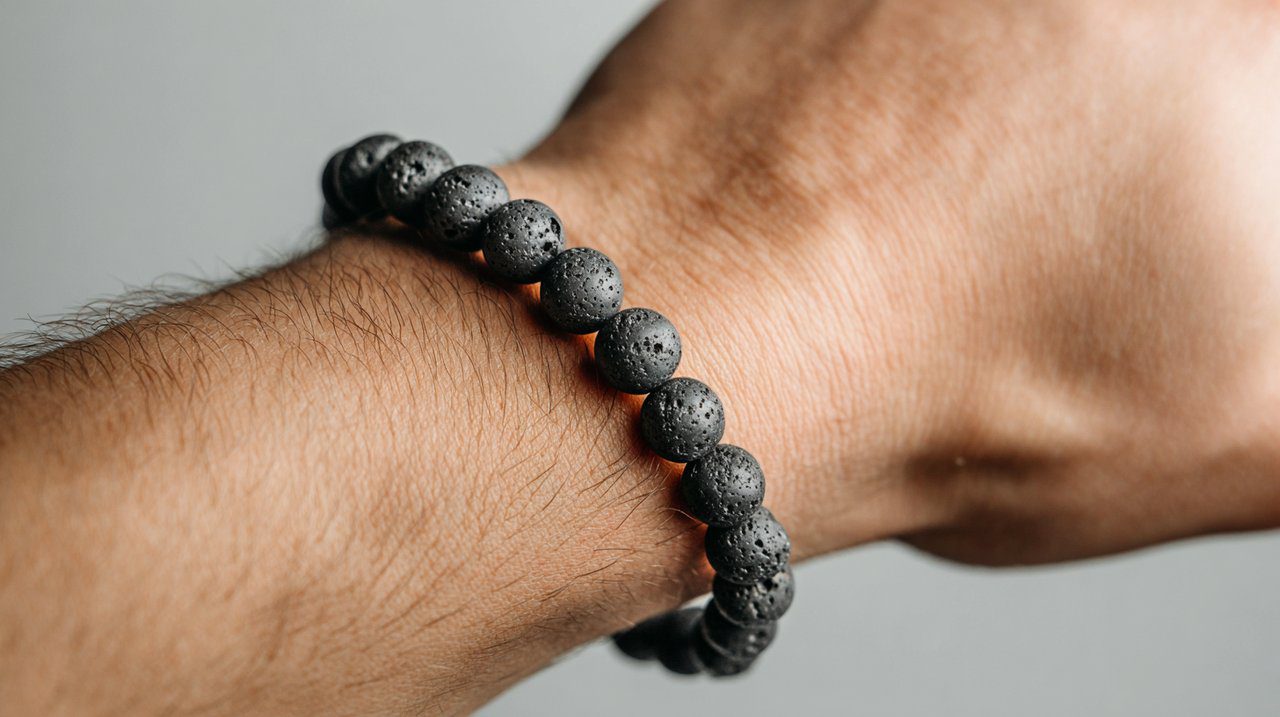
Crafting Intentions: Combining Lava with Crystals
For those exploring the lava rock crystal meaning, combining lava stone with other crystals is a common and meaningful practice. The lava stone serves as a stable base, helping to ground the often more ethereal or high-vibration qualities of other minerals. It acts as an energetic foundation, allowing other crystals to truly shine.
For example, pairing lava stone with amethyst can enhance a sense of calm while keeping one rooted in the present. This synergy creates a balanced energetic field, where the lava provides the essential anchor, much like how specific gemstone meanings are enhanced when combined thoughtfully in Tibetan jewelry. Exploring the intricate world of such spiritual adornments often brings up other powerful items, such as Dzi Beads: Meaning, Benefits, and Best Practices for Wear
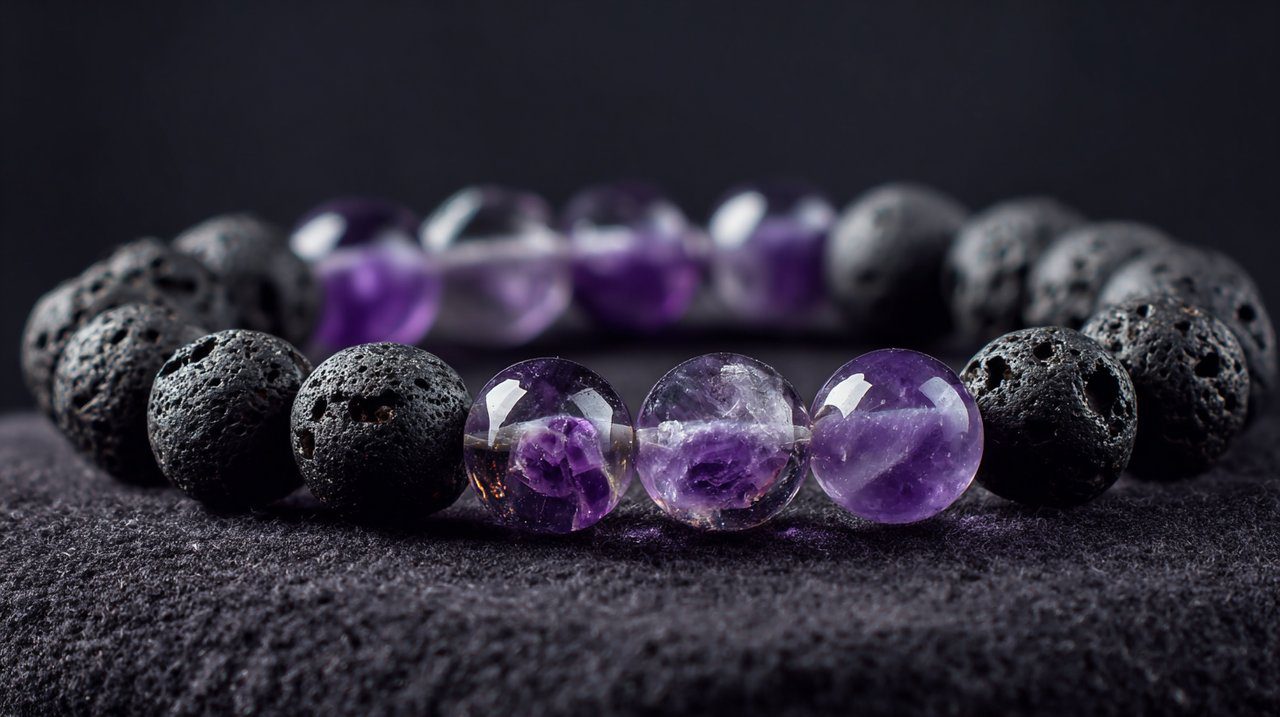
Acquiring and Valuing Volcanic Rock
Acquiring Your Earth Connection
For those wondering if you can purchase lava rock, the good news is its natural abundance makes it widely available. This accessibility allows for various uses, from personal adornment to garden landscaping.
When acquiring lava stone, consider your intended use. This will influence the form and size you choose, whether it’s small beads for a diffuser bracelet or larger stones for a garden feature. Its widespread availability underscores its role as a fundamental, accessible stone.
Understanding the Price Tag: Factors of Value
When considering the cost of lava rock, it’s generally quite affordable for basic landscaping or small jewelry beads, reflecting its natural abundance. Often, the price reflects more the craftsmanship involved than the raw material itself.
Factors influencing the value of lava rock include its size, whether it’s polished or left raw, and if it’s been crafted into specific items like beads or sculptures. The cost of bulk lava rock for garden use, for instance, will differ significantly from a finely crafted lava stone bracelet. Beyond monetary cost, its true value often lies in its functional utility and the psychological benefits it offers, which are consistent regardless of price.
Beyond Commonality: Rare and Valued Volcanic Finds
While common lava stone is abundant, certain unique formations or origins can command higher prices. These might include specific types of volcanic glass like obsidian, or unusually large, perfectly formed specimens with distinct aesthetic qualities.
True raw, rare rocks of volcanic origin are often sought by collectors for their geological significance or aesthetic uniqueness, rather than for their general ‘lava stone’ classification. These specialized finds, often with rich cultural or historical narratives, are distinct from the everyday lava stone used for aromatherapy or landscaping. Understanding this distinction helps appreciate the diverse spectrum of volcanic materials.
Integrating Earth’s Wisdom: A Modern Perspective on Volcanic Stone
This exploration of volcanic rock reveals a material that, while common, holds significant functional and psychological value. From my perspective, Alex Chen, the perceived “grounding” and “healing” properties of lava stone are not mystical. Instead, they represent a fascinating interplay of its physical characteristics, our sensory experience, and a fundamental human need for connection and stability.
From its porous structure that efficiently absorbs essential oils to its weighty, textured presence that anchors our attention, lava stone provides a tangible link to Earth’s fundamental forces. It serves as a reminder that sometimes, the most insightful discoveries emerge not from the dazzling and polished, but from the raw and unrefined.
Consider how this ancient stone, born of fire and earth, might offer a simple, tactile anchor in your daily life. Whether as a diffuser for a calming scent or a quiet presence in your hand, its humble nature invites a deeper understanding of stability and natural connection. It’s about finding wisdom in the most foundational places.
💡 Frequently Asked Questions
Lava stone, also known as volcanic rock, emerges from the Earth's core. It forms rapidly as liquid fire cools, trapping gases and resulting in its distinctive porous texture.
Lava stone typically appears dark (black or deep gray) with an an irregular, rough surface. A key characteristic is its high porosity, which makes it lightweight yet robust, and gives it a unique earthy or rugged tactile quality.
Its 'grounding' effect is attributed to a combination of its physical attributes and psychological responses. The stone's weight and rough texture offer tactile feedback, acting as a physical anchor that helps draw attention to the present moment and fosters a primal connection to Earth's stability.
Lava stone is commonly used as an excellent diffuser for essential oils due to its porous nature, often found in diffuser jewelry. It also serves as a stable foundation when combined with other crystals, supporting and amplifying their energies, and is used in landscaping.


